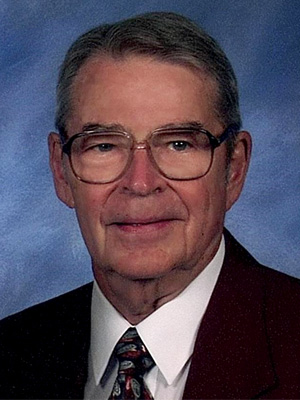
Dr. Teddy James Hirsch, professor emeritus in the Zachry Department of Civil and Environmental Engineering at Texas A&M University, passed away Nov. 10.
He leaves behind a legacy that impacted the transportation industry, leading research teams to many life-saving innovations in highway safety, including the breakaway signpost that gives on collision, crash cushions in front of concrete freeway abutments, median guard rails and more. He also was a leading-edge researcher at the Texas A&M Transportation Institute (TTI) from 1956 until his retirement in 1992.
In lieu of flowers, donations can be made to the Dr. Teddy J. and Mary J. Munson Hirsch Scholarship at the Texas A&M Foundation, 401 George Bush Dr., College Station, Texas 77840. Whether mailing a check or giving online, please write: "Apply this donation to the Dr. Teddy J. and Mary J. Munson Hirsch Memorial Scholarship Fund."
A celebration of life for Hirsch was held Sunday, Nov. 21 and streamed online.
A lifelong Texan, Hirsch received his bachelor's degree in civil engineering from Texas A&M in 1952. While an undergraduate student, he earned the top engineering student achievement award and was a member of the Aggie Corps of Cadets. Following his graduation, he went to work for H.B. Zachry Construction Co. in San Antonio. With Zachry's help, he prepared a bid for a new longer runway for faster high-speed jets at Bergstrom Air Base in Austin and won the job.
Hirsch returned to Texas A&M for his master's degree after receiving a scholarship from Humble Oil Co. It was during his master’s, he met his future wife and lifelong partner, Mary Jane Munson. After receiving his master’s in 1953, Hirsch went to work for Humble Oil drilling oil wells on King Ranch near Mexico, but after only a month, he was called to active-duty military service in the U.S. Army Corps of Engineers. Hirsch completed a 19-month tour in Korea where he was promoted to first lieutenant and became company commander of "A" Company in the 493rd Engineering Construction Battalion in Inchon, South Korea.
Upon President Dwight Eisenhower's passage of the new interstate highway bill in 1956, TTI and Texas A&M called Hirsch to join the civil engineering department to help design the massive project. With it, they offered him a scholarship to earn his Ph.D. Hirsch and Mary Jane returned to Bryan/College Station, her hometown, where they settled and raised their four children, Mary K., Jim, Bobby and Sarah.
Hirsch dedicated his career to teaching civil engineering at Texas A&M. He served as associate head and interim head of the civil engineering department during some of those years. He also served as the head of the structural engineering division in the department and at TTI.
Hirsch traveled to Europe several times to be the principal speaker at conferences to present the latest guard rail and other highway safety innovations to engineers worldwide. In his study of human tolerance to impact and acceleration, he also developed better safety for evacuating oil-rig platforms in the turbulent North Sea. Even after retirement, Hirsch was frequently called to analyze guardrail, bridge and other structural failures and serve as an expert witness in trials. After the tragic 1999 collapse of the Aggie Bonfire stack, Hirsch became a principal source of explanations to the media, including Texas Monthly and Dateline NBC.
Hirsch earned many awards for his tireless work improving highway safety and for community service, including the Paul Gray Hoffman Award by the Institute of Transportation Engineers (1968); Texas A&M Faculty Distinguished Achievement Award (1969); Outstanding Faculty Award – Texas A&M University Student Engineering Council (1983); among many other awards and recognitions throughout his career. He also was recognized with the department’s Distinguished Graduate Award in 2001. Dozens of publications and reports written by Hirsch with his distinguished colleagues and closest friends at TTI, many of which have obtained U.S. patents, have been adopted by highway departments across the U.S. and the world.
Read the full tribute and life of Dr. Teddy Hirsch.